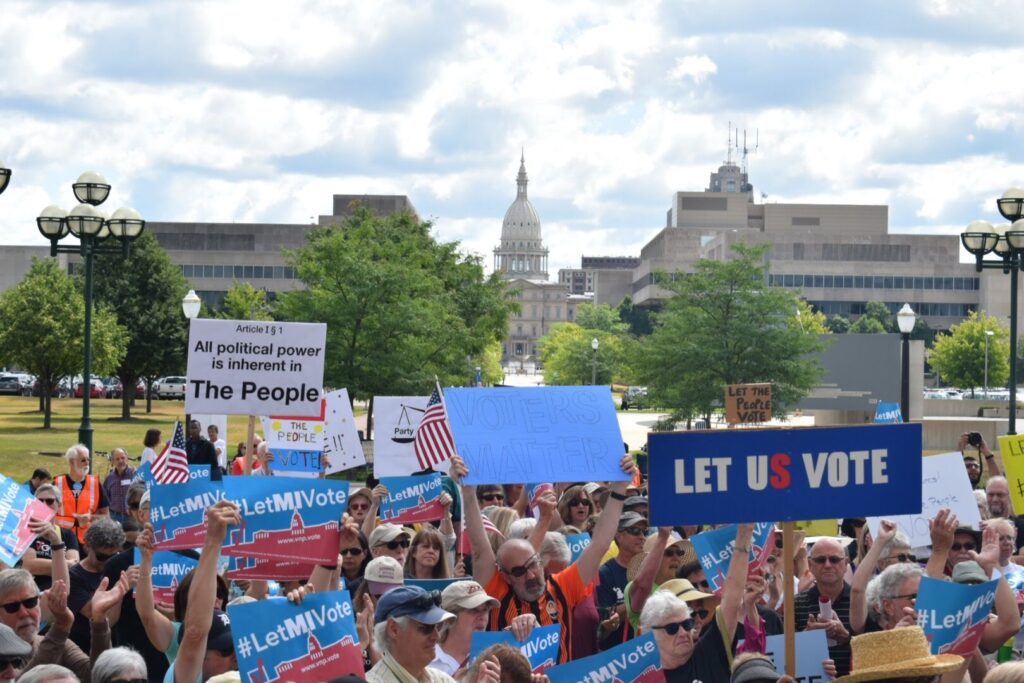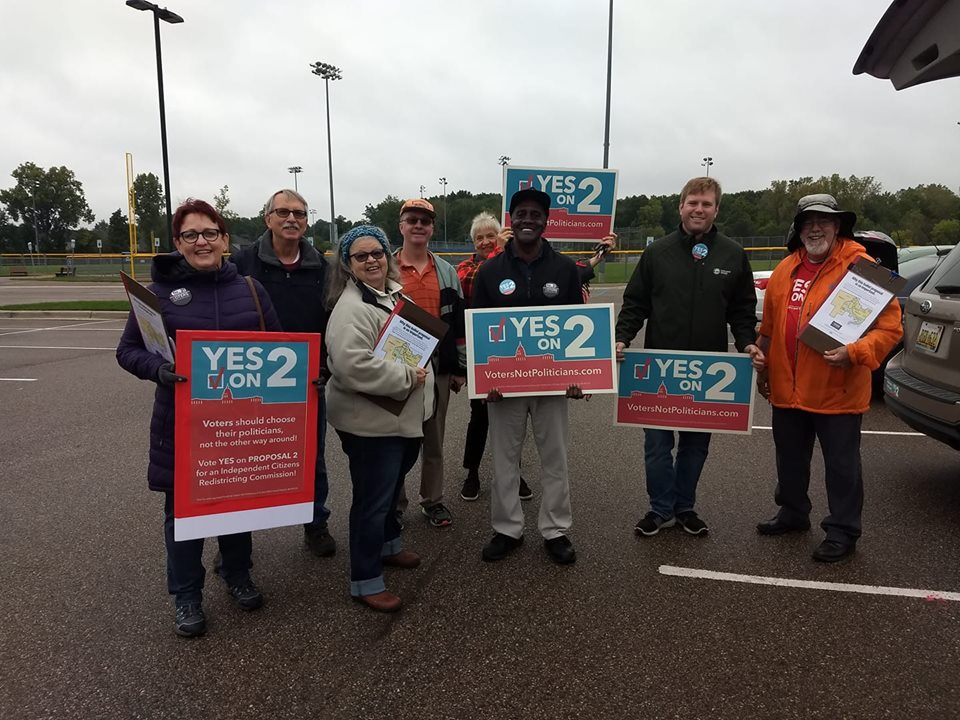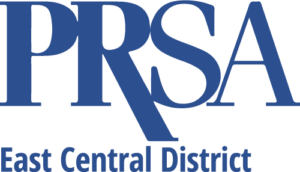Diamond Award Case Study: Yes on Proposal 2
By Elizabeth Battiste, APR, Senior Account Executive at Martin Waymire
Home Chapter: Central Michigan PRSA
Name of Award Entry: Yes on Proposal 2: From grassroots campaign to national phenomenon
Category: Public Affairs Campaign
SUMMARY:
Two days after the 2016 election, 27-year-old Katie Fahey posted on Facebook to see who would like to “take on gerrymandering in Michigan.” The post went viral; thousands of citizens stepped up to create Voters Not Politicians (VNP), a citizen-led movement to end gerrymandering. It was an uphill battle. Polling showed redistricting was a foreign concept to most voters. Political leaders scoffed; business and special interest groups announced opposition. No funders stepped up. Still, VNP grew as new volunteers signed up daily, coordinated largely on social media. All-volunteer grassroots energy propelled the organization to collect 425,000 signatures to put Proposal 2 on the ballot, overcome a lawsuit that went all the way to the Michigan Supreme Court, fight back against a vicious opposition campaign and inform millions of voters across the state with earned media, television ads, social media and one-on-one voter contact. Ultimately, Proposal 2 passed with 61% of the vote, changing Michigan’s political landscape for decades to come.



RESEARCH:
– Primary research: VNP held four focus groups with moderate, conservative and African American voters in Detroit and Grand Rapids to inform a statewide poll of 1,000 likely Michigan voters to guide communication strategy including demographic targets, key messages and likely opposition messaging. That research drove door-to-door, traditional and paid messaging. After paid ads launched, subsequent polling found a 14-point increase in support and an 8-point decline in opposition. This insight influenced further paid media investments and earned media messaging in target areas.
– Primary research: As the election neared, weekly tracking polls assessed the effectiveness of our, and our opponents’, ads and earned media messaging. We also tested digital and TV ads to optimize performance and finalize messaging.
– Secondary research: The state’s Qualified Voter File was analyzed to determine target audiences of most likely voters, reviewing past voting behaviors and partisan voting data. We also interviewed consultants and experts who passed redistricting reforms in other states to develop best practices.
PLANNING:
Research showed that the more voters learned about gerrymandering and Proposal 2, the more likely they were to vote yes. We developed a simple but effective message that thousands of volunteers across the state could follow consistently: Proposal 2 is the right “F-I-T” for Michigan: fair, impartial and transparent.
Campaign Goals: Secure 50%+1 of the vote with broad support across Michigan counties. The overall campaign budget – and the money we would need to raise to execute it – exceeded $15 million.
Objectives: Secure positive local, state and national earned media coverage, build a robust social media presence, maintain a consistent message while mobilizing volunteers to have conversations with voters at the local level across the state.
Target audiences: Persuadable voters (over 2 million across the state), national and state funders and partners and the news media.
IMPLEMENTATION:
Martin Waymire’s engagement with the campaign began in October 2017, near the end of the 110-day signature collection effort. We quickly moved to raise credibility of the campaign and interest in the issue by creating a “people versus establishment”/”David versus Goliath” narrative and:
– Positioned Katie Fahey as the nonpartisan, nonpolitical face of political reform in Michigan, unveiling her at a reporter roundtable that elevated the narrative of the campaign to a national scale when the Associated Press coverage caught the attention of The Rachel Maddow Show.
– Drafted and placed an op-ed in the conservative-leaning Detroit News, one of the state’s most respected publications, countering attacks by Republicans on the campaign’s nonpartisan nature.
– Planned and executed a major petition turn-in event, where more than 100 volunteers formed a human chain, passing boxes of petitions into state offices. Local, state and national media outlets covered the event and it was broadcast live on VNP’s Facebook page with more than 38,000 views.
– Provided reporters copies of court records with details of how the 2011 redistricting was financed by business groups and carried out by Republicans for partisan gain, putting opponents on the defense.
Polling showed that Republicans were least likely to support the proposal, and independent voters shared concerns that the campaign was a “Democratic front group.” To combat this we:
– Formed “Republicans for Redistricting Reform,” a group of respected GOP lawmakers and influencers, who provided a conservative perspective for Proposal 2 and countered the false partisan narrative.
– Crafted and placed four columns by former GOP leaders, including U.S. Rep. Joe Schwarz and state House Speaker Rick Johnson in the state’s largest publications.
– Hosted and broadcast on Facebook live a bipartisan “Redistricting History Roundtable” with former legislators to highlight the unethical backroom deals of past redistricting cycles, helping the vital Capitol press corps understand this complex topic during a tremendously contentious election cycle.
We strategically communicated national support from former President Barack Obama, former U.S. Attorney General Eric Holder, former Missouri Secretary of State Jason Kander and former Republican Governor Arnold Schwarzenegger, all of whom visited Michigan. Schwarzenegger’s visit became a rally held hours before the Michigan State University-University of Michigan football game in the heart of downtown East Lansing. Over 300 people attended, garnering national media attention. VNP also received celebrity shoutouts on social media from Jennifer Lawrence, Chris Pratt and Ed Helms.
To motivate and empower volunteers to share their compelling stories and reach target voters across the state in unique ways, while maintaining message consistency, we:
– Created a letter writing guide and hosted an online, interactive training to coach them through the process to encourage volunteers to write letters to the editor.
– Created materials that volunteers could print at home (postcards, signs and pledge-to-vote cards).
We harnessed volunteer passion and creativity to break through a cluttered political season while keeping the campaign interesting and authentic. Volunteers spread the message with Proposal 2 birds, Segways, a dozen gerrymandering songs, campaign “Yes On 2” emojis (👍✌️), jack-o-lanterns, goats, quilts, “Pups for Prop 2,” a 6-foot wooden replica of the first gerrymandered district and more. Volunteers delivered these unique awareness and persuasion tactics while reaching the campaign’s most remarkable accomplishment: knocking more than 463,000 targeted doors in key precincts across the state.
EVALUATION:
– Proposal 2 passed with 61% of the vote (over 2.5 million votes), winning 67 of 83 counties. VNP outperformed Gov. Gretchen Whitmer and won counties that voted for President Trump in 2016.
– More than 1,525 pieces of media coverage from the launch of the campaign through the election, including three pieces in the New York Times and coverage in The Washington Post, The Hill, Elle and 38 letters to the editor published in newspapers across Michigan.
– Twelve Michigan publications officially endorsed Proposal 2 including the Detroit Free Press.
– Over $15 million raised, with 98% of supporters donating $250 or less and 28,641 total contributions.
– 21,441 followers on social media, with top posts reaching 81K+ users on Facebook and 1.6M+ on Twitter.
What is your favorite part about being part of PRSA (National, District and Chapter levels)?
One of my favorite parts about participating in PRSA is the opportunity to judge annual award competitions across the country. It’s a great way to learn more about different projects in the public relations sphere, and it helps me strategize around new and creative ways to present my own award submissions.
What are you most proud of with regards to this Diamond/Merit Award entry?
Working on the Voters Not Politicians campaign to end partisan gerrymandering in Michigan is one of my biggest professional and personal accomplishments. It was an honor to work on a campaign that will fundamentally change the way our election districts are drawn for decades to come, and the work of thousands of volunteers provided a number of opportunities to get creative with public relations strategies and tactics.
What is something you learned throughout the process for this campaign or tactic?
Storytelling is key.
What is one tip you would recommend for those interested in submitting Diamond Award entries?
Start with the judging sheet and build your entry around what is listed. We have different criteria for our local awards, Diamond Awards, and national Silver Anvil Awards, so it’s important that you are crafting your entry with the specific event in mind. I make an outline with all of the requirements, enter the relevant information from the campaign, and then fill in the rest of the entry with narrative and examples.
# # #

